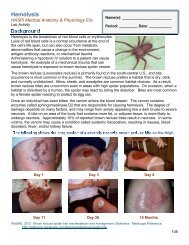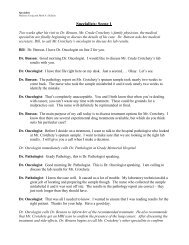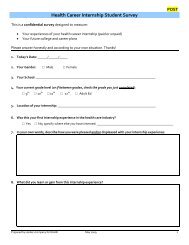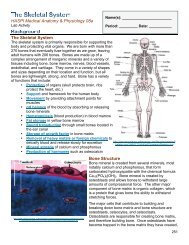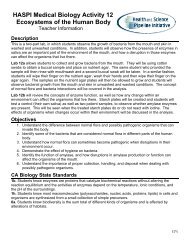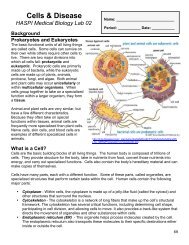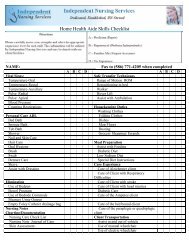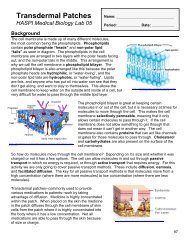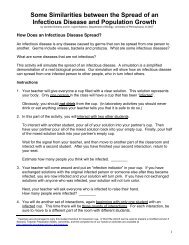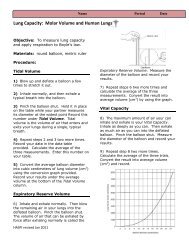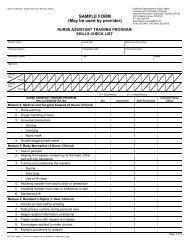Create successful ePaper yourself
Turn your PDF publications into a flip-book with our unique Google optimized e-Paper software.
Name: __________________________________________ Date: ___________ Period: _________<br />
Review Questions - on a separate sheet of paper complete the following<br />
1. What is the function of the digestive system?<br />
2. What is the role of the liver and pancreas?<br />
3. What is the responsibility of the gallbladder? How<br />
do you think having the gallbladder removed will<br />
affect digestion?<br />
4. What is an enzyme?<br />
5. Explain the function and location of the following<br />
enzymes: amylase, pepsin, trypsin, and lipase.<br />
6. Diagram A shows the rate of enzyme activity of<br />
digestive enzymes – amylase, pepsin, and trypsin –<br />
in a variety of pH. Using the knowledge of what you<br />
learned during this lab, identify which enzyme is most<br />
like A, B, and C in the graph. Explain your answer.<br />
7. What effect does cooking have on enzyme activity? Why?<br />
8. Why does freezing food preserve it?<br />
9. What is the role of bile in digestion?<br />
10. The polymer of protein is _______, and the monomer is ________.<br />
Diagram A<br />
http://mshuda.files.wordpress.com/2010/04/digestiv<br />
e-enzymes-ph.jpg<br />
11. Why does the body need proteins, and from what food sources can they be obtained?<br />
12. The polymer of carbohydrates is _______, and the monomer is _________.<br />
13. Why does the body need carbohydrates, and from what food sources can they be obtained?<br />
14. The polymer of lipids is _______, and the monomer is ________.<br />
15. Why does the body need lipids, and from what food sources can they be obtained?<br />
16. Based on what you learned about digestion, explain why it is important to eat a variety of foods<br />
to nourish your cells.<br />
On the attached digestive system diagram, label the following:<br />
<strong>17</strong>. Mouth, pharynx, esophagus, stomach, small intestine, large intestine, rectum, liver,<br />
gallbladder, pancreas.<br />
18. Areas where the following occur; carbohydrate digestion, protein digestion, lipid digestion.<br />
19. Area where absorption of nutrients occurs.<br />
20. Area where water is reabsorbed.<br />
Adapted from Neo/Sci Food <strong>Digestion</strong> Lab Activity 2011 241



